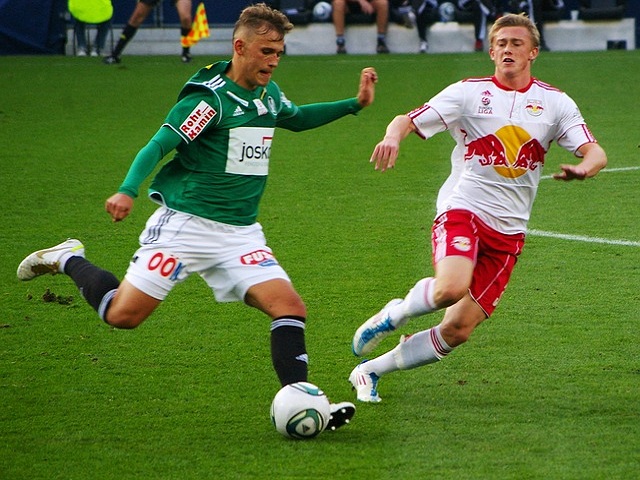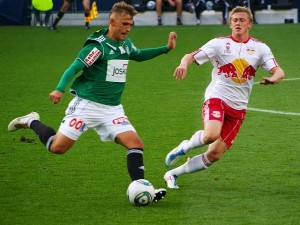Simplicity: A Component of Great Football Kits

 Anyone who remembers Chelsea’s nauseating grey-and-orange kit back in 1995 probably has suffered the worst era for football kits. Liverpool, however, beat a dead horse with their awful 2013/2014 shirts. These unsightly jerseys have one thing in common: they are all complicated. All of them try to innovate, or at least be different, and it backfired in the most embarrassing way.
Anyone who remembers Chelsea’s nauseating grey-and-orange kit back in 1995 probably has suffered the worst era for football kits. Liverpool, however, beat a dead horse with their awful 2013/2014 shirts. These unsightly jerseys have one thing in common: they are all complicated. All of them try to innovate, or at least be different, and it backfired in the most embarrassing way.
More than anything, this should serve as a lesson to coaches or anyone who makes the sartorial decisions at any club. You should bin the rainbow designs and stick to simple, monotone shades. As stated by Soccer Tutor, it is straightforward and more importantly, it represents the team’s traditional colour. It is more than a base colour for the shirts, a club or country’s colour is a source of pride.
Evoking Memories and Perception
Whatever shade your team chooses, you will be following a precedent set by a great team who wore the same colours. Red, for one, is the World Cup-winning colour of England and its two most successful clubs, Liverpool and Manchester United. Bavaria’s Bayern München also wears the same hue, and they are the pride of Germany. So successful are teams in red that Cardiff City’s Vincent Tan changed the club colours for a time, from blue and white to red.
Even if it is something as bland as white, you will only be wearing the royal colours of Real Madrid. Alfredo di Stefano, Ferenc Puskás, Francisco Gento and Raymond Kopa did not have problems wearing white while defining the formative years of the European Cup.
For crests of untraditional colours, such as yellow or orange, Brazil and Holland are behind you. The one taught the world how to play with joy, the other taught the world how to play; there is pride in wearing the same undertones that Pele and Johan Cruyff once donned.
Reverting to Tradition
Sheffield, aside from housing the first football club, also had their local university publish a study about trends in football shirts. No doubt, business is running the show nowadays, but in kits, tradition triumphs. To sell more, clubs choose to portray their own, authentic qualities rather than letting money decide. You can hear purists around the world of football cheering this news.
There is something so evocative about having the right kit. Every time your team scores, you feel an overwhelming urge to kiss the badge or flaunt the colours on the opposing side. Provocative, but pride and joy for your own team does that.




